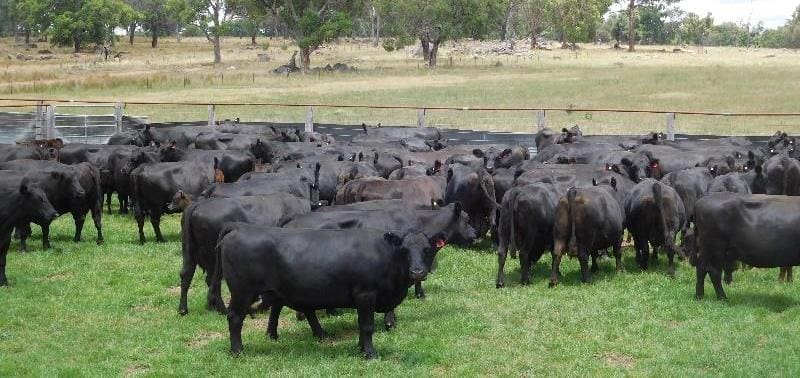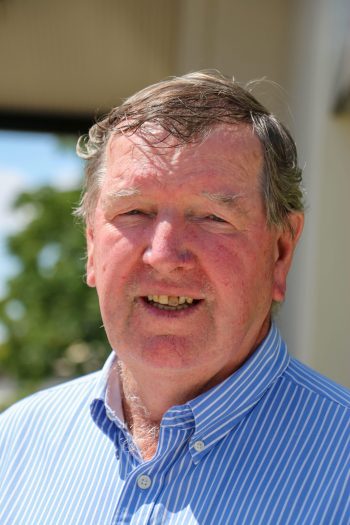
STAYABILITY or longevity of breeding females and bulls in Australian beef herds is a hot button topic as producers seek to lift one of the most economically impactful traits in their commercial cow-calf operations.
More than 70 commercial and seedstock producers attended a NSW Angus Seminar in Wagga Wagga earlier this month to hear from a wide range of industry experts on the trait of Stayability.
Stayability is the ability of a sire and/or a female to produce daughters which stay in the herd until six years of age.
The lowly heritable trait is a measure of reproductive longevity and benefits herd productivity in two ways: through the decreased need for replacements and higher average weaning weights due to a larger proportion of mature cows in the herd.
The selection tool is generated as an EPD (expected progeny difference) by International Genetic Solutions, the world’s largest beef genetic evaluation system with over 22 million animals and more than 450,000 annual registrations. Participating breeds include Red Angus, Simmental, Limousin, Saler, Shorthorn and Gelbvieh in Canada, the US and Australia.
International Genetic Solutions director of science and education Dr Jackie Atkins said Stayability was the prediction of the number of cows who calve as two-year-olds and who remain in the herd at six years of age.
“We cap it at six years as we don’t see much genetic variation once you go past six years,” Dr Atkins said.
“Our Stayability evaluation is multi-breed – when we look at the top 25 percent of our bulls for the evaluation, we see on average their daughters produce two calves more in their lifetime.
“Their daughters are also twice as likely to be in the herd six years later than the ones in the bottom 25 percentile.
“Daughters from bulls in the top 25pc for Stayability averaged almost two more calves in their lifetime compared to daughters of bulls in the bottom 25pc.
“If it’s important to your commercial herds to reduce the number of replacement heifers needed per year and increase the lifetime productivity (number of calves produced) per cow, an EBV/EPD for Stayability is the most effective and efficient way to improve the genetics for that goal.”

Dick Whale, independent Breeding and Marketing Services, would like to see stayability included as a selection trait in the Australian beef cattle herd.
Independent Breeding and Marketing Services director Dick Whale incorporates Stayability as a trait in a custom selection index tailored for client’s commercial herds.
Mr Whale said the longevity of breeding cows and bulls depended on fertility, structural soundness and docility.
“What worries me most is the longevity of cows and bulls in our commercial herds,” he said.
“Breed societies around the world are using selection indexes which are terminal and based on growth and carcase traits with no consideration of maternal and longevity.”
Mr Whale said he was not ‘anti-BreedPlan’ and used the Australian genetic evaluation system as a selection tool in conjunction with his Base Value Determining Index which has economic weightings for calving ease, stayability, marbling, tenderness and carcase weight.
“Angus cattle are traditionally good for calving ease, low birthweight, eye muscle, marbling and fat but poor for stayability and feed efficiency,” he said.
“Australian Angus has Days to Calving as their fertility trait but very little data is collected on this trait because all data from herds using synchronised AI is not used. A total of 51pc of (registered) Angus calves are bred by artificial insemination.
“Therefore, only data is collected on small non-AI herds and late calving cows.”
Animal Genetics and Breeding Unit scientist Dr Matt Wolcott said although an EBV (estimated breeding value) was not produced for Stayability in Australian BreedPlan, it was a trait given much consideration in developing the present EBVs.
Dr Wolcott observed that Stayability is a composite trait which aims, primarily, to describe female production.
“In BreedPlan, we already describe this via the Days to Calving EBV, which is supplemented by information on male reproduction using scrotal circumference,” he said.
“We are in an environment, however, where stud breeding is increasingly dominated by AI and that has serious implications for the Days to Calving trait.
“The philosophy at AGBU is to zero in on these individual traits that are driving this economically important aspect of productivity in the commercial world, measure them, and produce EBVs for them.
“To achieve this, we have already implemented recording and evaluation of age at puberty, lactation anoestrous interval and per cent normal sperm traits in the Brahman evaluation.
“These are precise, and highly heritable descriptors of female and male reproduction, and current research is exploring the opportunity for these to contribute to the Angus BreedPlan analysis, and that of other temperate beef breeds.
“There is also a focus on describing body composition in lactating cows through objective records collected in wet first calf females.
“Early results in tropical and temperate breeds suggest this can be a heritable basis for selecting to improve the capacity of females to maintain body condition through the annual cycle.”
Dr Wolcott said under harsher conditions, this also becomes a survival related trait.
“These are not easy traits to evaluate. As our ability to do so improves they will become a real driver of our understanding of genetic profitability into the future,” he said.
According to Holbrook veterinarian Dr Shane Thomson, HVC Production and Breeding, the components of cow longevity are fertility, reproductive performance, temperament, structural soundness, disease, phenotype, mothering ability, age.
Dr Thomson said longevity/stayability was influenced by reproductive longevity, structural soundness (feet, legs and teeth) and udder quality.
“Part of the justification of stayability is cows need to recoup the costs of heifer development and ongoing cow maintenance during their productive lives,” he said.
“Should we be treating stayablity as a single composite trait or look at those independent traits in an overall selection index?
“Low heritability traits (such as stayability) allow a huge opportunity to control the environment through management and that’s a positive.
See Genetics editor Al Rayner’s recent column on selection for stayability.



Selecting for ‘Stayability’ using data from herds with a high rate of artificial may help other components of the trait but less so natural fertility. Commercial or seed stock natural fertility phenotypes need to be collected to make sure natural fertility remains in the breeding objective. The high use of artificial breeding technologies does not always lead to a high rate of genetic improvement, a total breeding program design approach needs to be implemented